Explore Articles Filed Under: Ayahuasca
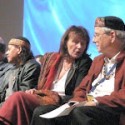
Three important conferences on shamanism were held in 2008, two of which were not easy to get to from the United States — the World Psychedelic Forum in Basel, Switzerland, March 21–24, and the Fourth Annual Amazonian Shamanism Conference in Iquitos, Peru, July 19–27. A third conference — the 25th International Conference on Shamanism and Alternative Modes of Healing — was held closer to home, in San Rafael, California, August 30–September 1. If you missed these conferences, there are still ways to access at least some of the presentations.

The quirky television series Weeds was a surprise hit for Showtime. It was the channel’s highest rated series in its first year, and its fourth season premier attracted 1.3 million viewers, Showtime’s highest-ever viewership. Mary-Louise Parker, as the lead character Nancy Botwin, won a Golden Globe for her performance on the show. She also drank ayahuasca.
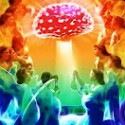
Since at least the 1970s, a tenacious meme has circulated among a generally progressive youthful demographic, some of whom have now carried that meme with them into their elderhood. The meme states that there is a connection between our ecological crisis and our loss of earth-connected spirituality — a connection to both earth and spirit that we once possessed but have now lost, and which is still preserved for us by some indigenous peoples. Still, the meme says, there is hope. A spiritual awakening is coming, associated with the Age of Aquarius, or the fifth pachakuti, or the culmination of the Mayan calendar in the year 2012.
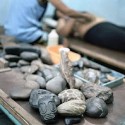
Significant among the tools used by shamans in the Upper Amazon are piedras, or piedras encantadas, magic stones, sometimes called just encantos, charms; such stones are called inkantos by the Machiguenga and Shipibo. My teacher doña María Tuesta told me that her father was a tabaquero who kept two magic stones, one male and one female, in a jar filled with a mixture of tobacco and water. When doña María was about eight years old, while her father still lived with the family, she saw him work with the stones twice. She could see the spirits of the stones: they both had very dark skin and long black hair.
In 1998, a man named Donald Topping wrote an article in the Bulletin of the Multidisciplinary Association for Psychedelic Studies entitled Ayahuasca and Cancer: One Man’s Experience. Topper was a retired professor of sociology and linguistics at the University of Hawai’i, a proponent of drug policy reform, an advocate for medical marijuana, and a founder of the Drug Policy Forum of Hawai’i. He had been diagnosed with colorectal cancer and been treated, apparently successfully, with surgery. But, in September 1996, he was told that the cancer had metastasized to his liver; the next month, the right half of his liver was surgically removed. A long-time believer in alternative medicine, he refused follow-up chemotherapy.
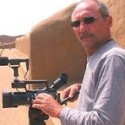
For some time, Thomas McKinnon and AyasminA — that’s her name — have been working on a still uncompleted documentary film, entitled In Search of the Divine Vegetal, about the healing power of ayahuasca. AyasminA describes the project as exploring “the nexus between Western and Indigenous cosmologies in relation to plant intelligence.” The goal, she says, is to “help nurture a species of hybrid consciousness consisting of Western science, Indigenous magic, phytospirituality, and the Great Unknown.”

It’s actually not a bad idea for a television reality show. Get several very minor celebrities, pack them off away from their home comforts, and subject them to a range of programs that claim to enhance inner peace, happiness, and understanding. That at least was the premise of a short-lived BBC program called, naturally enough, Extreme Celebrity Detox, on which the guest celebrities performed t’ai-chi exercises in the Slovenian Alps, practiced Taoist sexual yoga in Thailand, did body-cleansing hatha yoga in the Himalayas — and drank ayahuasca in the Peruvian Amazon.
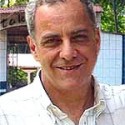
We have spoken, briefly, about Takiwasi, the Center for the Treatment of Drug and Alcohol Addiction and the Research of Traditional Medicines, located in Tarapoto, and its techniques for healing addiction using ayahuasca and other traditional Amazonian medicines. Takiwasi — the name means House that Sings — was founded and continues to be directed by French physician Jacques Mabit. Whatever you may think of his methods or his claimed results, there is no doubt that Mabit is a fascinating guy.
I want to think about three sacred plants — the ayahuasca drink, the peyote cactus, and the teonanácatl mushroom. These plants — well, actually, one of them is a fungus — are often discussed in terms of their — dimethyltryptamine, mescaline, and psilocybin respectively. Sacred plants such as these are commonly categorized by the chemical structure of their single active molecule. Thus peyote is categorized by the phenethylamine core of its mescaline molecule; ayahuasca and teonanácatl are categorized by the tryptamine cores of their dimethyltryptamine and psilocybin molecules.
The following, in three parts, is a documentary, originally created for French television, entitled Ayahuasca, the Snake and I, written and directed in 2003 by Armand Bernardi, narrated in English and with English subtitles. The film was produced by ArtLine Films, a well-known production company that coproduces documentaries and feature films with all the major French channels and with international broadcasters.

Discussing the article:
Hallucinogens in Africa